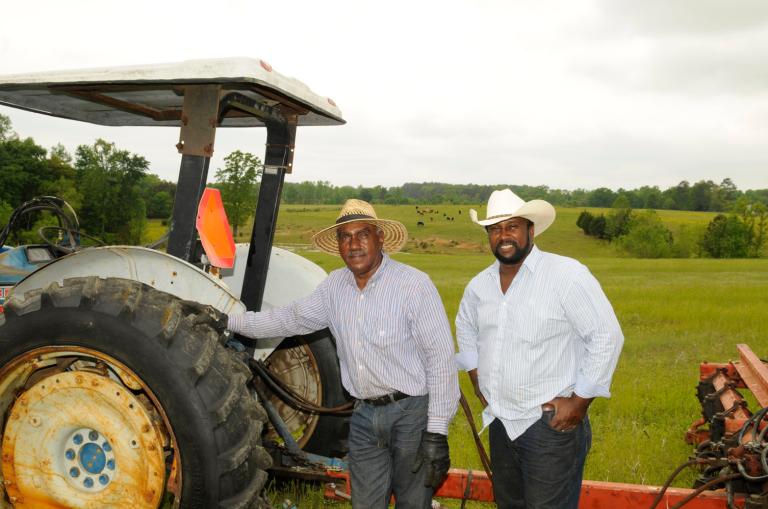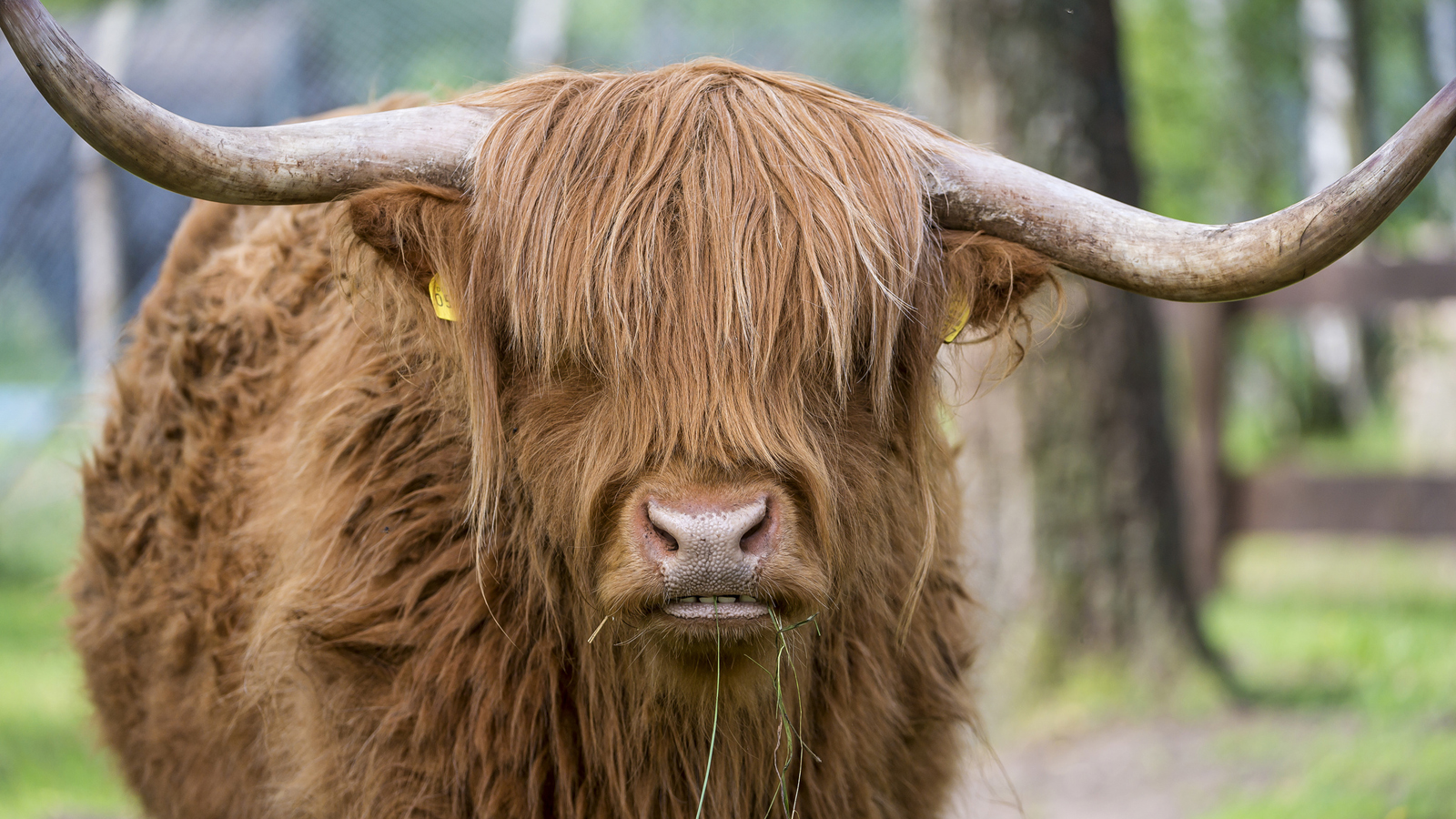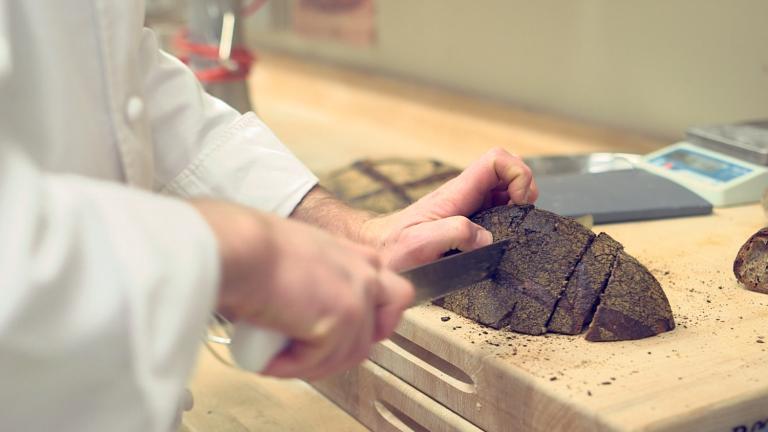An hour north of San Francisco is where you’ll find the last slaughterhouse in the Bay Area. I drove right by it at first — it’s just a low-slung collection of one-story rectangular buildings and prefab trailers behind a high fence. It was sandwiched between a Bikram yoga franchise, a block of condos, and an outlet mall. The Bikram franchise seemed to have taken the lack of signage outside the slaughterhouse as an open invitation, because someone had hung a large banner across the slaughterhouse fence that read “Certified Organic Yoga.”
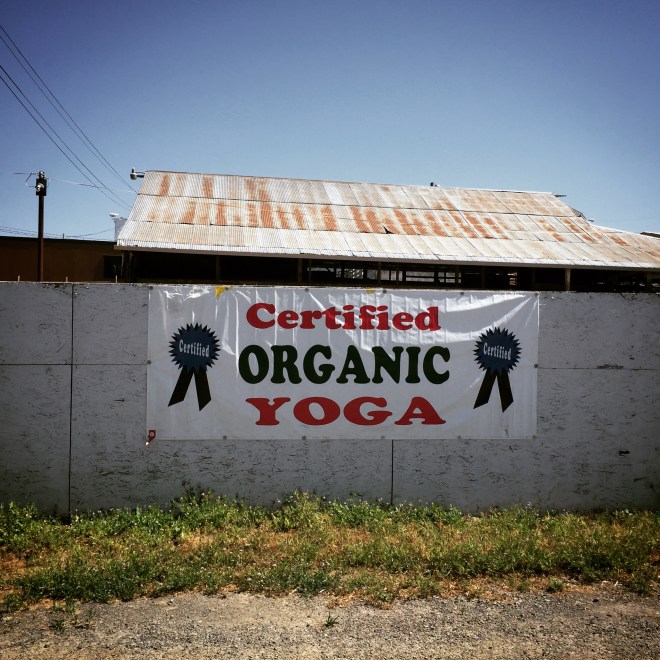
The place once known as Rancho Veal and now called Marin Sun Farms Petaluma is the only slaughterhouse that lies between the Sonoma and West Marin grasslands and the socially conscious eaters of San Francisco. Without it, the history of the local food movement in the Bay Area would have been very different. There were plenty of idealistic pastoralists willing to fight to protect the grasslands for agriculture instead of letting them turn into suburbs. There was an equally idealistic cabal of chefs willing to pay a premium to buy their meat from locally and ethically raised animals. But there was only one Rancho. And all it took to keep it open was the collapse of the entire American real estate market — that, and 8.7 million pounds of recalled beef.
[grist-related-series]
For all its importance, Rancho has kept a low profile. When I wrote an article about it back in 2008, my requests to visit were flatly denied. “You will never get inside here” is the phrase I remember the receptionist using.
But a lot can change in seven years. On a bright spring morning recently, I just walk through the front gate, past the office that the slaughterhouse is obligated to provide for its local USDA inspector, and into another boxy, prefab office trailer that looks like it and its wood paneling, have sat here, completely unchanged, since the early ’70s.
Inside, David Evans, the facility’s current owner, is discussing complicated meat orders. A dot-com startup that delivers cook-your-own-meal kits has just called out of the blue begging for a rush order of several thousand tiny packages of organic ground beef, individually bagged. Is it possible to do an order like that so quickly? There’s a brief debate. Later, they figure out how to make it happen.
San Franciscans of the olden days, like most other urban Americans, ate animals that were killed within city limits. In the early 1900s, cattle were herded up Third Street and met their fate in working-class industrial neighborhoods like the Bayview (aka Butchertown, aka Putrid Row) and Dogpatch (named for the packs of feral dogs that roamed the neighborhood looking for slaughterhouse scraps). Islais Creek, which was unfortunate enough to pass through the Bayview, often ran red with blood, and had a nickname of its own: Shit Creek.
The railroad and the refrigerator made city slaughterhouses obsolete, for the most part. Years ago, I interviewed Roger Horowitz, a historian who has written a lot about Chicago’s stockyards, for Meatpaper magazine. What surprised me in Horowitz’s stories was how proud the stockyards, slaughterhouses, and meat-packing plants of Chicago were of what they did. There was nothing like them anywhere else in the world — they were the high-tech firms of their day.
When Upton Sinclair researched the slaughterhouse scenes in The Jungle, he didn’t need to go undercover — he just had to join a group of visiting tourists, who made sure to check out the Chicago stockyards the way that modern Chicago tourists check out the Cloud Gate or the Institute of Art. Horowitz sent me a copy of a tour booklet that the Armour Plant produced as a souvenir for visitors. “Hog-killing and the subsequent treatment of pork products offer to the average visitor a most interesting and unique field of observation,” the pamphlet read, next to a line drawing of squealing pigs suspended from chains being killed by a man in an apron. “It would seem as if this department had been brought to a state of absolute perfection.” Henry Ford was a guest on one of those tour groups, and claimed that the slaughterhouse line was his inspiration for the automobile assembly line. He just took the stockyard’s innovation in systematically and repetitively breaking animals down into cuts of meat, and reversed it into building cars up.
In Northern California, as in the rest off the country, cattle ranchers became a part of this system. Ranchers raised their calves on pasture and then, once the calves had reached about 800 pounds, they would sell them to whoever offered the best price — usually a buyer for one of the major meat companies. Whoever purchased the calves would ship them out to the vast feedlot and slaughterhouse complexes of the Great Plains. With each decade, the cattle industry in particular seemed to consolidate a little more, and the number of buyers dwindled.
This was great if you liked to eat a lot of steer; the price of beef fell by half between the 1970s and the 1990s. But it was not great if you liked to raise them. While a drought-exacerbated cattle shortage has kept prices high recently, today, four companies buy 85 percent of the cattle on the market.
“When you get consolidation like that, it can actually be great,” says Evans, whose company, Marin Sun Farms, took over Rancho last year. “Because people start to look for alternatives.”
Evans was one of those people. He started Marin Sun Farms in 1999, as a fourth-generation member of a ranching family, and a freshly minted graduate in agricultural science from CalPoly. Evans had decided his niche would be selling cattle that had grazed on local pasture for their entire lives, instead of being fattened in a feedlot. He would raise maybe 10 cattle a year — about the minimum he needed to turn any kind of a profit, period — and sell them as whole, halves, and quarters to locals in West Marin, who had the kind of local purchasing ideology and freezer space necessary to buy at that scale.
Evans had big dreams, but what he was doing wasn’t especially radical. The experience of Bill Niman, a West Marin schoolteacher turned rancher, had proved that there were a lot of people out there who were willing to pay a premium for meat from animals that had been treated well and raised locally. And a determined group of local activists had seen to it that, despite being just an hour’s drive from San Francisco, Marin and Sonoma Counties were a place where small-scale agriculture could still happen.
Beginning in the ’60s, the orchards south of San Francisco were steadily replaced by residential developments and office parks. (A small plum grove that was reportedly the last working orchard in the area was reportedly sold to a real estate developer two years ago.) The dairies and ranches to the north of the city fought back — hard — against residential development.
The same thing was set to happen north of the city — and, in some places, it did. But a detailed plan to turn West Marin into a suburban bedroom community of 241,000 people was foiled in the late ’60s and early ’70s by an unlikely alliance between ranchers and environmentalists. The alliance’s poster child was the Marin Agricultural Land Trust (MALT), founded in 1980 by dairy farmer Ellen Straus and biologist Phyllis Faber. MALT was the first organization in the United States to use land trusts — historically a tool for the wealthy to keep taxes low on large estates — to preserve land for agricultural use. The land that was saved wasn’t necessarily the best farmland the Bay Area had, but it was good for grazing.
During the same time, nearby Petaluma — once the egg capital of the world — had fallen on hard times, but was equally determined not to turn into a residential suburb. City residents voted to limit residential development to 500 new units a year, and were promptly sued by the Construction Industry Association. In 1975, much to everyone’s surprise, Petaluma won the case. The city went on to grow into what it is today — a place where strip malls, feed mills, condo developments, and the last slaughterhouse in the Bay Area somehow all manage to be neighbors to one another.
Rancho might not look like anyone’s idea of bucolic country living, but local government had its back. “If we’re going to maintain the pastoral lands of these two counties,” Bill Kortum, environmentalist and former Sonoma County supervisor, told the Santa Rosa Press Democrat in 2006, “we better have a slaughterhouse.”

Like nearly every rancher in Marin, Evans sent his animals to Rancho. While a few ranchers did a complicated legal dance that allowed them to use the on-farm slaughtering services of a legendary entrepreneur known as “One-shot Johnny,” if you wanted to sell through farmers markets or to restaurants, Rancho was the only game in town. That poached beef on your plate at Chez Panisse, that burger at Zuni? All passed through Rancho.
Rancho may have been critical to the local ranching economy and to Bay Area foodie culture, but the reverse wasn’t true. I talked to Bob Singleton, Rancho’s former owner, once back in 2008, for an article that I wrote for San Francisco Magazine. Singleton was sharp and opinionated over the phone, but leery of any press coverage — he feared attracting the attention of animal rights activists, and later told the magazine’s fact-checkers that he’d never talked to me at all. At the time, Singleton explained that, yes, he did custom work for local ranchers like Evans, who raised odd breeds of animals and made strange requests like “Save me the ox tails” or “Can I have my cow’s head back?” He also explained that no slaughterhouse, even in the Bay Area, could survive as a business on that alone. Singleton’s bread and butter, as it were, was dairy cattle.
The average dairy herd culls a third of its cows every year and all of its male calves, and because dairy cattle don’t travel well, they tend to be killed closer to where they were raised. Singleton bought them and shipped them in, from as far away as Nevada and Twin Falls, Idaho, before turning around and selling the meat on the commodities market. By 2008, his business had been in a slow decline for decades; Rancho was operating at half the capacity that it had in the 1980s. Cattle ranching in Sonoma was on the wane, too, as many ranchers discovered that vineyards were more profitable. Rancho had been bought for a song after the former owner went bankrupt in the 1960s, but the land it stood on was too valuable for that to ever happen again.
None of this deterred Evans. He was continuing to pursue the slow-growth plan for Marin Sun Farms when, in 2002, something unexpected happened. The New York Times Magazine published an article by a then relatively obscure nature writer named Michael Pollan. Titled “Power Steer,” it described the life of a feedlot steer and ended with the author eating a steak from a grass-fed steer raised in the Hudson Valley — and pronouncing it tough, but way more delicious. Suddenly, everyone who read the New York Times Magazine wanted to try a grass-fed steak, too. Evans’ niche product had just vaulted into a larger niche.
Because he was buying cattle from like-minded ranchers in the area and selling it under the Marin Sun Farms label, Evans was also better poised to meet the sudden demand than individual ranchers with small herds. And he found that he was getting the hang of marketing, which he had decided was something that local ranching really needed. He felt pretty good at dealing with the more fussy Bay Area customers — including the ones that insisted that he grow biologically impossible livestock, like grass-fed pigs. “When you get to be a mid-sized rancher,” Evans told me, “you have to decide if you’re going to raise cattle, or sell them. I love raising cattle, but what the ranching community needed was someone who could sell them.”
Over the next few years, Evans invested heavily in customer service. He began moving from selling frozen meat to selling the fresh kind. He didn’t think it was necessarily any better, and it certainly wasn’t easier, but that was what grocery stores, restaurants, and local butcher shops wanted. He opened a cut-and-wrap facility, so that Marin Sun Farms could start packaging and selling smaller cuts. He worked a lot on inventory. “If someone comes to the farmers market and you don’t have a chicken for them that week,” Evans said, “they may say they believe in seasonality, but they’ll go buy that chicken from somewhere else.”
And he tried to buy Rancho, unsuccessfully, many times. In 2006, Pollan released The Omnivore’s Dilemma, which built on the reporting that went into the “Power Steer” article and further propelled the grass-fed craze. 2006 was also the year that an attempt to build a slaughterhouse in Ukiah, Calif., was blocked by local animal rights activists and residents concerned about air and water quality. The slaughterhouse had been backed by Phyllis Faber, one of the co-founders of MALT, and many in the local food movement had hoped that it would be a fallback in case Rancho ever shut down.
Rancho itself was so old that the city of Petaluma had no records of it ever being constructed. But it was becoming clear that proposing a new slaughterhouse in any community was going to be a tough sell, even in the local-food-loving Bay Area.
At that point, Singleton had already sold the option to replace Rancho Veal to a real-estate developer for $3 million. The general attitude in the Bay Area local food scene was one of controlled panic, but Singleton seemed pretty happy about it. He said that some people might see Rancho’s central location as an advantage, but it had some drawbacks. He had come to work to find animal rights activists chained to the front of the building, and the facility had been firebombed twice. “I guess they figured out that we were killing a whole lot of veal calves,” Singleton said. “Which you can pretty much figure out from the name.” Singleton insisted that local ranching was doomed, no matter what anyone told me. What the suburbs didn’t take, the wineries would.
Then, a few months later, in December 2008, everything changed: The housing market tanked with a velocity never before recorded in American history. The developer backed out; Rancho Veal stayed open. In San Francisco, the artisanal meat craze built into a meat tsunami, little aware of the abyss it had narrowly skirted. A new creature known as the “rock-star butcher” emerged. In the years that followed, I saw more dead pigs at parties than I could count. I wondered sometimes how much of this was due to a genuine commitment to local ag, and how much of it was a wealthy city swooning over animal husbandry the way that Marie Antoinette did over dairy maids. But in the meantime, there was money to be made.
Despite its challenges — some of the most expensive farmland in the world, for starters — Sonoma and Marin continued to be as much of an incubator for food startups as Silicon Valley had been for tech. A cattle rancher could still stop in Petaluma and pick up ear tags and equipment from Jay’s Dairy Supply. Petaluma’s three remaining feed mills were going gangbusters cranking out new types of feed — organic feed for organic farmers, local feed for farmers who cared about that, local organic feed for people who were concerned about the fact that most organic feed on the market these days was grown in China. “People flock to opportunity,” said Evans. “This is a rural community, but close to a metropolitan area with lots of money. You can come here, lease a small plot, drive to San Francisco, and find people to buy your product.”
The Rancho story might have kept on as before, but in early 2014, scandal erupted: All the meat from animals that had been killed at Rancho in the year 2013, some 8.7 million pounds, was recalled. A federal investigation found that Singleton, Amaral, and two senior employees at Rancho had been working together to hide the fact that they were sending meat from diseased dairy cattle out into the meat supply.
Prosecutors alleged that Singleton had been buying up dairy cows with signs of possible eye cancer on the cheap. Those cattle were slaughtered while the federal meat inspectors were on lunch break, and their heads were swapped with the heads of different, healthier cattle, so that the inspectors wouldn’t notice that anything was amiss. Singleton, then 77, pled guilty. During the recall, he had already quickly sold Rancho to David Evans.
It was both the opportunity that Evans had been waiting for for years, and something that he’s still waiting to live down. Nearly every small rancher in the Bay Area was hit hard by the recall. While they argued that their animals never touched Rancho’s dairy herd and were slaughtered on a completely different day, the feds would not exempt them.
“We’re so tired of talking about the recall,” said AnnaRae Grabstein, Marin Sun Farms’ director of operations — though, she adds, Marin Sun Farms couldn’t have bought Rancho without it.
It’s been a year since Marin Sun Farms reopened the slaughterhouse. In that time, the company has gotten Animal Welfare Approved certification. It shut down its cut-and-wrap operation in San Francisco, where butchers broke down carcasses into more sellable cuts, and moved it onsite. The sale was viewed with a mixture of relief and trepidation by some ranchers. Now that it owned the only slaughterhouse in town, would Marin Sun Farms use its newfound monopoly for good? Would ranchers who chose to sell direct instead of through Marin Sun Farms be penalized?
So far, the answer is good. Sending animals to the slaughterhouse was more expensive than it had been with Rancho’s old owners, but the butchers did better work. Marin Sun Farms polled ranchers about what new services they wanted from their ideal slaughterhouse, and the responses led it to start a service that delivers from Rancho to restaurants and grocery stores as far away as Los Angeles.
What remains now is to figure out how to do what Rancho’s former owners thought couldn’t be done, and make a slaughterhouse that is by locals, for locals. In the past, those local clients only took up one day a week on Rancho’s schedule. National trends may be in Marin Sun Farm’s favor, though — because of the drought, the massive slaughterhouses that once killed off their smaller competitors are now going under themselves, freeing up more business for those small and mid-sized operations that managed to survive the last few decades.
In order to survive in the long term, Marin Sun Farms Petaluma is going to have to go much further to re-localize Bay Area eating habits. I mention to Evans, offhand, that if the much-beloved Straus Dairy, which was the first certified organic dairy on the West Coast, started packaging the meat from its dairy cows under the Straus label, the vegetarians of San Francisco might have an aneurysm. Evans disagrees. He thinks that Straus hamburger would be awesome — that the Bay Area has more people who care about buying meat from animals that were raised locally and ethically than it does people who want to keep whatever pastoral illusions they may have intact.
“So that’s where it happens,” says Grabstein. We’re perched at the edge of a corrugated metal fence, looking out over the winding path that animals take to the slaughterhouse. Two cow skulls, bleached by the sun, look over the way to the knock box, where the animal in question arrives and is killed — hopefully — before it even suspects anything is amiss. “It’s like No Country for Old Men,” says Grabstein. “You know, when Javier Bardem kills people with that air gun.”
Today is pig day, and, inside, 100 hogs are already dead and being parceled out by a crew of guys in blue hairnets and white lab coats. While the outside of the slaughterhouse looks dingy and inconspicuous, inside it’s sleek and well-maintained. It reminds me of the clean rooms in some of the factories that I’ve seen — except with way more dead pigs hanging from the ceiling. The pigs have been a useful hedge against the drought that California has been in for the last three years, since they’re not grass eaters. Many local ranchers have chosen to sell off their cattle herds early instead of risking a grass shortage.
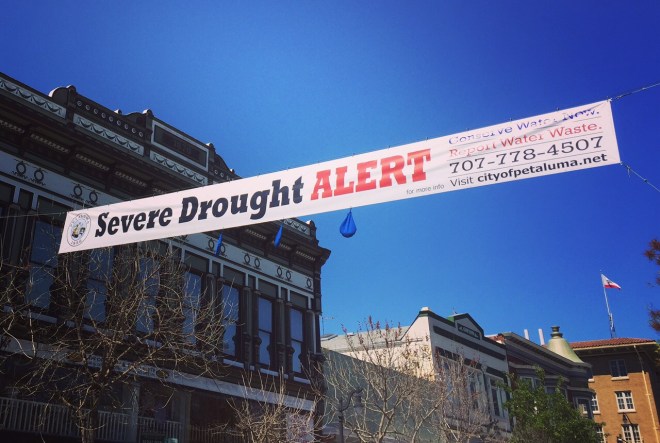
Heather Smith
A few bulls stand in a paddock behind us. Two of them are Scottish Highlands, with long, sharp horns that would cause them to get rejected by most slaughterhouses. The Highlands prance around each other and flip their long, rust-colored bangs over their eyes like supermodels.
They’re scheduled for tomorrow. I feel a pang of sadness for them, because where they really should be is on the cover of French Vogue. But I realize that I’m also sad because I’ve seen the bulls at mega feedlots, and know that they look stoic at best, miserable at worst — nothing like these Scottish divas.
At this point, the local food movement has relearned the art of raising domestic animals so that they have good lives. It has made strides toward protecting the land where agriculture happens. The Marin Sun Farms Petaluma slaughterhouse is part of the next piece of the puzzle: protecting the infrastructure, like slaughterhouses, that are necessary to keep local food going as a functioning business, not just a hobby for gentleman farmers.
The Rancho saga is full of near-misses. A lot had to go right — and wrong — before the last slaughterhouse in the Bay Area was saved. But Evans is sure that, within the next few years, another slaughterhouse will open up within an hour or two of the city.
It won’t be easy. A competitor would have to figure out how to afford the land and how to win over the neighbors. But it’s inevitable, Evans says. And that’s when he’ll know that he’s really succeeded: the day that the competition shows up.
Correction: This post has been updated to clarify that the slaughterhouse was renamed Marin Sun Farms Petaluma when it was acquired, and to fix errors in reporting the conversation about a large individually bagged ground meat order. Grist regrets the errors and has sentenced the author to copy-editing the USDA Slaughterhouse 101 Fact Sheet.
